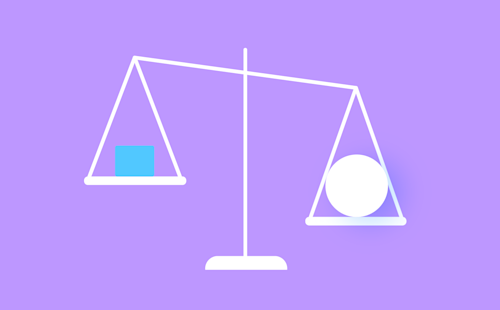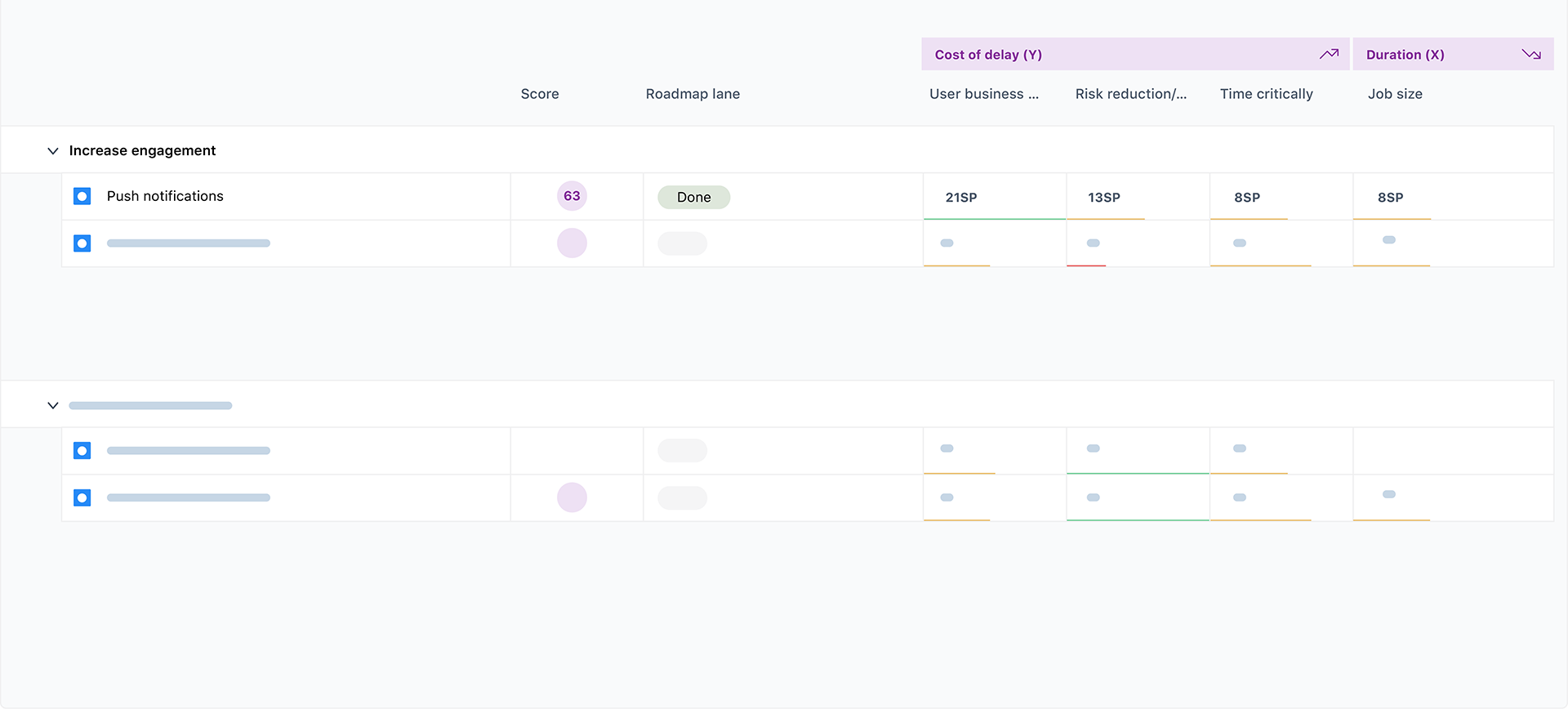
WSJF prioritization template
Try this template
Preview

About the Weighted Shortest Job First (WSJF) scoring template
Prioritize your product backlog based on Scaled Agile’s Weighted Shortest Job First (WSJF) scoring model. Each job’s score is calculated as the cost of delay divided by the job size or duration. What you get:
A product backlog with a customizable prioritization framework using a custom prioritization formula.
A priority chart to visualize your quick wins and timewasters.
More views: Now-next-later roadmap, product timeline, Kanban workflow board.
What is Weighted Shortest Job First (WSJF) and why is it useful?
Weighted Shortest Job First (WSJF) scoring model is a prioritization framework developed by Scaled Agile to help product management teams prioritize jobs like epics, capabilities, and features.
You’ve heard of the phrase “grabbing the lowest hanging fruit”, right? Well, that’s what WSJF helps teams do.
Performing WSJF or using a WSJF prioritization template, the team calculates each job’s score as the cost of delay divided by the job size or duration. Items that receive the highest ratings should be prioritized first. With the help of our WSJF scoring template, you will save hours of time on designing all the necessary components such as the timeline, roadmap, and workflow board.
Teams only need to fill out our WSJF scoring template with data and make any necessary tweaks relevant to the project! Quick and easy.
Why the cost of delay in the WSJF scoring template?
In order to correctly estimate what to prioritize, we need to compare the value of all the features we have in our list.
Value in Weighted Shortest Job First is expressed as the cost of delay, and was popularized by Donald Reinertsen in his book ‘The Principles of Product Development Flow’. “If only quantify one thing, quantify the Cost of Delay” — Donald Reinertsen
The most effective way to understand the real value of a particular item is to assume what would happen if you don't add it and how much that would cost. If you have two features (A and B), ask yourself: “If we delay A a month, what does it cost us? And if we delay B a month, what does it cost us? Which one does it cost more to delay?”
What are the components of the cost of delay in the WSJF scoring template?
The cost of delay consists of 3 components:
User-business value (BV) – This is what we traditionally think of value. Consider the relative value of each job to your customers or business. For example, projects or features that generate the most revenue, or which customers most often request, will score higher.
Time criticality (TC) – Is there a fixed deadline? Does the user/business value drop dramatically over time? If you know a competitor is working on something similar, then your project would carry a higher time criticality score as you want to be the first to market with your new product or feature. Or, if you are working on software for a particular conference, that means you can’t deliver it on the next day after the conference — that also makes a time criticality score high.
Risk reduction or opportunity enablement value (RR|OE) – What are the future implications of each job? Does one open up other business opportunities or reduce future risk?
The general formula of cost of delay that’s also used in our WSJF scoring template looks like this: CoD = BV+TC+RR|OE
How is WSJF calculated?
There’s no need for any expert mathematics here! Using our WSJF scoring template, you can calculate the WSJF score by just filling in the ratings for user-business value, time criticality, risk reduction-opportunity enablement value, and job size. Then, the score is calculated for you!
What are the benefits of using a WSJF-driven product roadmap template?
The main goal of our WSJF scoring template is to help you and your team prioritize initiatives or opportunities, not via intuition but based on data and logical calculations. This makes your product roadmap more strategically sound, puts the right priorities in order, and — by using the WSJF scoring template — you also save time on laborious work and can free your team up for high-impact activities.
The airfocus WSJF prioritization template includes:
A product backlog with a customizable prioritization framework
A 4x4 priority chart to visualize your quick wins and don’t dos
A ready-to-use now-next-later roadmap
A timeline to visualize your release plans
… and a Kanban PM workflow board.
Everything is there, now you just need to start using it!
Get started with the WSJF prioritization template now

Pre-installed apps
Priority Ratings
Set up a custom prioritization framework
Benefits that come from using this template
Powerful prioritization framework
Build a strategic product roadmap
Seamless integrations
Ready to use & fully customizable
Learn how to use airfocus templates effectively
More templates
Experience the new way of doing product management


Experience the new way of doing product management




